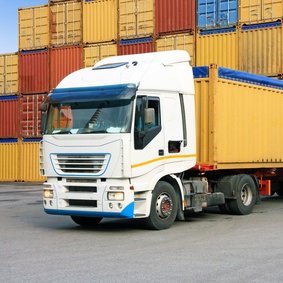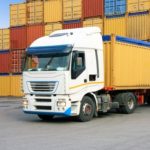Why Driverless Delivery of Goods Is Likely to Arrive Before Passengers

By Keith Naughton and Kyle Stock, Insurance Journal, March 2018
In the wait for self-driving technology, cell-phone toting tech bros may have to cede their spot in line to pizzas, Craigslist couches and the mounting ephemera of e-commerce.
The future—at least in the near-term—will not only be driverless, but sans passenger as well.
The early conversations around driverless cars have focused on robot taxis because taking the human driver out of a cab seemed like the quickest path to profitability. But an increasing number of companies—automakers, tech giants, startups, parcel services—are seeing autonomous delivery as the more lucrative venture.
“The revolution in commercial vehicles will come first, then the passenger cars” will follow, said Ashwani Gupta, senior vice president of Renault-Nissan’s light commercial vehicle business. “The moment business people start believing this is going to generate additional revenue and that this is going to be more efficient, then I think they’ll start working on it.”
And no wonder: The potential market is huge. Consumers now favor shopping online to schlepping to the mall, with Amazon.com Inc. alone delivering more than 5 billion packages to its Prime members last year. Automating the arrival of all those brown boxes on front porches would slash shipping costs in half, experts say. That’s why consultant McKinsey & Co. predicts that in less than a decade, 80 percent of all items will be delivered autonomously.
“The level of interest around autonomous goods delivery has gone up dramatically,” said Asutosh Padhi, a McKinsey senior partner. “The economics will be compelling and it will change consumer expectations in a fundamental way.”
Automated delivery has plenty of advantages over robo-taxis, starting with fewer safety concerns about hauling cargo instead of humans. And unlike ride hailing, driverless delivery is not dependent on the morning and evening rush when cabs are busiest. Delivery demand exists 24/7 and works best in the dead of night when there’s scant traffic on the road. A robot that works almost all the time could cut two-day delivery into two hours. And a utilitarian delivery pod, which doesn’t need seats or creature comforts for occupants, can maximize return on investment.
“The business potential is so large,” said Daniel Laury, chief executive officer of Udelv, a Silicon Valley startup that began demonstrating driverless delivery of groceries in January. “You’re talking about hundreds of billions of dollars.”
Categories
- Benefits Resources
- Bonding
- BOP
- Business Insurance
- Commercial Auto
- Commercial Property
- Company News
- Construction
- Crime Insurance
- Cyber Insurance
- Directors & Officers
- Employee Benefits
- Employment Practice Liability Insurance
- Entertainment
- General Liability
- Health Insurance
- Healthcare
- Healthcare Reform
- Homeowners Insurance
- Hospitality
- Manufacturing
- Medical Malpractice
- Mining & Energy
- Nightclubs
- Personal Auto
- Personal Insurance
- Professional
- Restaurants
- Retail & Wholesale
- Risk Management Resources
- Safety Topics
- SBA Bonds
- Security
- Seminars
- Technology
- Tourism
- Transportation
- Uncategorized
- Workers Compensation
Archives
- May 2021
- November 2020
- October 2020
- September 2020
- August 2020
- July 2020
- June 2020
- May 2020
- November 2018
- September 2018
- August 2018
- May 2018
- April 2018
- March 2018
- February 2018
- January 2018
- December 2017
- November 2017
- October 2017
- September 2017
- August 2017
- July 2017
- June 2017
- May 2017
- April 2017
- March 2017
- February 2017
- January 2017
- October 2016
- September 2016
- August 2016
- July 2016
- June 2016
- May 2016
- April 2016
- March 2016
- February 2016
- January 2016
- December 2015
- November 2015
- October 2015
- September 2015
- August 2015
- July 2015
- June 2015
- May 2015
- April 2015
- March 2015
- February 2015
- January 2015
- December 2014
- November 2014
- October 2014
- September 2014
- August 2014
- July 2014
- June 2014
- May 2014
- April 2014
- March 2014
- February 2014
- January 2014
- December 2013
- November 2013
- October 2013
- September 2013
- August 2013
- July 2013
- June 2013
- February 2013
- November 2011
- October 2011
- September 2011
- July 2011
- June 2011
- March 2011
- November 2010
- October 2010
- September 2010
- April 2010
- February 2010
- November 2009
- October 2009
- November 2008
- August 2008


